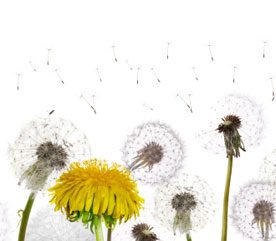Weed Control in the Landscape: Taking Care of Weed Barriers
Landscaping fabric and other artificial weed barriers are effective alternatives to herbicides, but can cause new problems and still fail to prevent weed growth in the long run.

Use a Barrier Cloth
The best place to use barrier cloth is under gravel or rockeries, pathways, decking and other places where few or no plants are growing. In flowerbeds, especially in wet climates, weed barriers can hold too much moisture, causing some plants to rot. They can also promote the growth of moulds and fungi and may cause roots to grow less deeply.
Using Mulch Bark or Wood
When mulching with bark or wood chippings over weed barriers, a new layer of topsoil is created as the mulch decomposes and the weeds that move into this fresh soil will be even harder to remove because their roots will intertwine with the barrier fabric. Even if you don’t mulch over the fabric, organic material and seeds will blow in and weeds will take root.
Dealing with Plastic Barriers
Plastic barriers are the worst, blocking oxygen and preventing moisture from reaching the soil. They become brittle and disintegrate, making them a litter problem and very hard to remove. If you are using heavy-duty black polythene to eliminate weeds with out chemical weedkillers, the sheeting should be lifted for a day or two twice a year to let oxygen reach the soil. Fabric landscaping is better, because it will breathe.
The best barriers are those that can be removed each season, so the soil can breathe or those that decompose into the soil, such as ones made from recycled paper. The ideal way to keep weeds down is to work soil regularly and add plenty of organic matter, so they can be pulled out easily. Keep on top of them at the seedling stage by hand weeding or hoeing.



